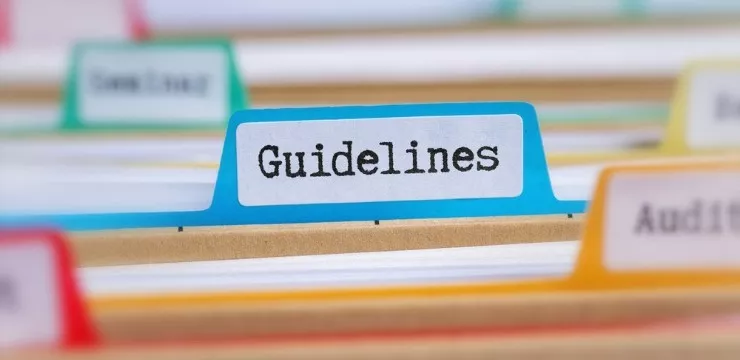
Assessing change readiness is a critical step in change management – in fact, it comes before the first step.
That is, before you even start your change program, you must gauge how “ready” your organization is.
In this guide, we’ll look at change readiness in depth:
- What it is, why it matters, and how to do it
- How and why to conduct an assessment
- Questions to ask
- Tips and best practices
And much more.
Let’s start at the beginning:
The “What” and “Why” of Assessing Change Readiness
What is change readiness?
A quick, obvious definition: it is how ready an organization is for change.
To add a few dimensions, though, it refers to factors such as:
- How technically capable the employees are
- How quickly and agilely an organization can react
- Existing systems and mechanisms of change
These factors all refer to an organization’s state – how capable, ready, and willing it is to undertake an organizational change.
But why does this matter?
It matters simply because an organization that isn’t ready to change can’t change.
At least, it can’t change successfully.
This is why change readiness assessments are so crucial.
How to Assess?
Your organization should assess readiness as soon as you know that you are ready for change.
When assessing change readiness, follow these steps:
Assess the change itself.
The change in question will determine what preparations need to be made.
Not all change programs require the same human capital, budget, or technical resources.
When assessing project scope, for instance, you will want to define areas such as:
- Change Impact – What areas will be impacted, how much, and how jobs and people will be affected.
- Risk Assessment – What are the risks of changing versus not changing, and how to manage risk.
- Training – How much employee training and onboarding will be required.
- Stakeholder Involvement – Which parties will be directly involved, indirectly involved, and impacted.
- Cultural Impact – Whether or how much the culture of the organization will be transformed.
Defining the change’s scope will help you understand the potential impact of the project, as well as what resources you will need to succeed.
Therefore, start every assessment by assessing the scope of change.
Assess the people.
Where does the organization stand in terms of change management?
Assess its:
- Enterprise Change Management – The formal change management department or function in the company.
- Culture – Company cultures can be open, closed, innovative, conservative, prudent, competitive, and so on … all of which will affect a project’s outcome.
- Leadership – Business leaders can guide change management, support it, obstruct it, or they can be neutral, innovative, stingy, eager, et cetera, which will affect how a program is received and supported.
Understanding the organization’s people can help you adjust critical areas in your change plan, such as your communications and training strategies.
Assess your resources and technical capabilities.
Consider budget needs as well as other resource requirements, including:
- Hardware
- Software implementation
- IT infrastructure
- Technology
- Physical infrastructure
- Equipment
- Manpower
And so on.
Assessing readiness will set the stage for your entire change management project.
You’ll know what’s possible, what’s not, and where to begin your change project.
Questions to Ask
To make the above guidelines more concrete, let’s look at questions you can ask during your change readiness assessment.
These questions can be incorporated into user surveys, employee feedback requests, and open meetings.
Organize them as you like, then use their responses to inform your change readiness assessment.
First, start with the project itself:
- What is the scope of the project?
- How far are we from our end vision?
- Who will be impacted?
- What type of change are we undertaking?
Then, ask questions about the organization:
- How would we describe our culture?
- What are our values?
- How innovative are we?
- Are we open to change?
- What is our leadership style?
- How open are our leaders to change?
Finally, assess your technical capabilities:
- What budget estimate can we come up with for this project?
- What budgets have been allocated in the past to similar projects?
- What systems and structures do we have in place that can support this project?
- Do we need new tools, technology, infrastructure, or systems in order to achieve our goals?
These types of questions can help you collect the necessary data for your assessment.
How to Use Your Assessment
Assessing change readiness helps you:
- Define or redefine the scope of your project. If you lack certain things, such as technology or certain values, then these must be incorporated into your program.
- Understand what you’re working with. To use a simple analogy: before you start building a house, you have to know what materials you are working with. In change management, assessments help you understand those materials.
- Plan your roadmap. When you know where you stand, you can develop goals, a roadmap, and a strategy for change.
Throughout your change project, change readiness data can inform decision-making and help you make better strategic choices.
Final Thoughts
Change readiness is an invaluable tool for any business undergoing transformation.
Regardless of the scope of the change program, this data can offer significant change management insights.
As we have seen, it can help you:
- Improve project results and avoid failure
- Hone in on your change strategy
- Make better decisions throughout the course of your project
For these reasons – and others mentioned above – it’s vital to assess change readiness as thoroughly as possible.
WalkMe Team
WalkMe spearheaded the Digital Adoption Platform (DAP) for associations to use the maximum capacity of their advanced resources. Utilizing man-made consciousness, AI, and context-oriented direction, WalkMe adds a powerful UI layer to raise the computerized proficiency, everything being equal.



